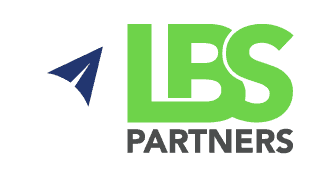You have heavily invested in your new ERP system but you are not seeing the results that you expected. People are not seeing the value, and in fact, some of them may express they preferred the old way of working. Have no fear, you’re not alone, and the silver lining will come. Many businesses underestimate the importance of planning and implementation when it comes to deploying a new system into their organisation. However, it can be fixed! You may just need to revert back to an earlier stage in the implementation plan and redefine some elements to get you back on track.
There are a number of steps that should be followed during implementation or optimisation to get the most from your ERP system. In a global economy where technology continues to adapt and improve how we interact with our key stakeholders, there are a large amount of ERP System offerings in the market. These range from well-known multinationals such as SAP and Oracle (Generic), to industry-specific offerings such as Procore (Construction) and Datacor (Chemical & Process Manufacturing). When embarking on the adaptation of an ERP system there are a number of items you need to identify and understand:
- Clearly outline what the specific business needs are for implementing an ERP system, and define what success looks like eg: Our business data will be held in one central location. As the system will impact every team in your organisation, it is critical that all stakeholders (both management & those interacting with the system) are party to the requirements gathering and system selection. This helps develop buy-in and aids with the implementation process.
- Map Current Business Processes: Implementing an ERP system offers a great opportunity to review and streamline processes across the organisation. We incorporate a level of the Lean Principles to identify waste and value-add in the process flow, with a view to automating and optimising those that will be incorporated into the system. If you transfer inferior operating procedures to an ERP, they will remain inferior!
- Clearly map current IT infrastructure: List all currently utilised applications noting any existing integrations. This exercise highlights dependencies on individual business applications (those that are critical/tertiary), aiding in the ERP system implementation planning and requisite training. At this point, you should also research whether the system in question can integrate with your current application framework, or even eliminate their need entirely.
- Understand System Support Requirements: When implementing and utilising an ERP system your business will require ongoing support from the platform provider for BAU, future integrations, system upgrades, etc. This support comes at varying levels(and prices) based on individual business needs.
- Cloud vs On-Premise System: ERP software providers are increasing their cloud-based offerings. These should be considered carefully as part of current and future requirements in steps 1. and 2. above. There are pros and con’s to be weighed up; It may be more beneficial to have increased accessibility with a platform hosted in the cloud, whereas other enterprises prefer the additional security of the platform hosted on-site among others.
- Invest in Training: Employers often believe that the adaptation of an ERP will solve all problems. It is noted that even with good implementation and integration with current systems, the ERP system does require human interaction. It is crucial that ongoing staff training in the use of the system is followed to unlock the full potential of your ERP.
In summary, those who are willing to scope and correctly define goals, garner management commitment, maintain open lines of communication, and correctly resource an ERP implementation project optimise the chance of seeing ROI and creating real value for their enterprise.
Let’s cut to the chase, how can the Digital Consultants team at LBS help? We bridge the gap! We translate the technical jargon into the business requirements. We help support you on the journey and work with your technology providers to ensure that all the business needs are covered, processes are defined and the right training is carried out ensuring that you get the most out of your investment.
